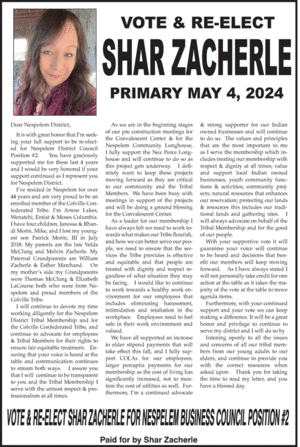Arctic peatland fires affect us
Weather Watcher
Last updated 8/7/2019 at 9:38am
As global temperatures rise (June 2019 was the hottest June ever recorded) they tend to sustain wildfires. Earlier this summer, in June and July, hundreds of long-lived, intense wildfires burned within the Arctic Circle. Most of the fire activity was in Alaska and Siberia. Alaska alone had over 400 wildfires. There were also large fires in Greenland. Associated with these large-scale fires is the release of tiny particles — megatons of particulate matter. Black carbon particulates, also known as soot, are released into our atmosphere.
Black carbon is harmful to living things — humans and other animals breathe it into their lungs and, in part, it enters the bloodstream. Our health is affected as well as our atmosphere, because it impacts global warming, too. A few fires here and there aren’t considered a big deal. “But when you have so many fires continuously emitting, the smoke remains in the atmosphere for so long that it can actually change temperature profiles for several days and has a meteorological and climatic impacts,” according to an atmospheric scientist at NASA’s Goddard Space Flight Center.
Scientists have evidence that black soot carbon can accelerate melting in the Arctic. The dark soot absorbs sunlight, warming the atmosphere. When it falls on ice and snow, darkening the surface, it reduces reflectivity and traps more heat. These fires are releasing large amounts of carbon for a known reason: they are burning through a lot of peatlands. Peat is decomposed organic matter and is a large natural carbon source. With higher global temperatures, frozen peatlands are starting to dry and are now highly flammable. Lightning strikes now start massive peatland fires and they tend to burn longer than forest fires. The peatland fires are difficult to fight and put out. It’s a cycle now – researchers speculate that the increase of CO2 from the Arctic fires will warm the atmosphere further, leading to even drier peat soils and, hence, more large peatland fires.
What may we see over the next few months weatherwise? I’ve taken a look at the Climate Prediction Center (CPC) and what their crystal ball is showing for our region in August, September and October. The outlook for precipitation is, well, up in the air (no pun intended). The CPC is showing our region with an equal change of below, normal or above normal chance of precipitation. Likely the wayward thunder and rain storm, maybe a few storm systems too. For temperatures, we are in a different ballpark. Our region is high in the probability of above-normal temperatures. The next 90 days will tell how accurate the CPC was, won’t it?
Finally, let us take a look at the month of July 2019 and see how the weather faired. The total precipitation at my home weather station was 0.18 inches. The all-time mean for July is 0.47 inches, while the all-time high amount was 2.94 inches in 1993. The most recent, driest July without rain was in 2017. The high temperature for July was 96.1˚F, the mean for the month was 72.5˚F and the low was 49.5˚F. The all-time high temperature was in 1939 at 113˚F; the all-time low was 32˚F in 1983, and the all-time mean for July is 73.1˚F. A slightly cooler July in 2019.




Reader Comments(0)